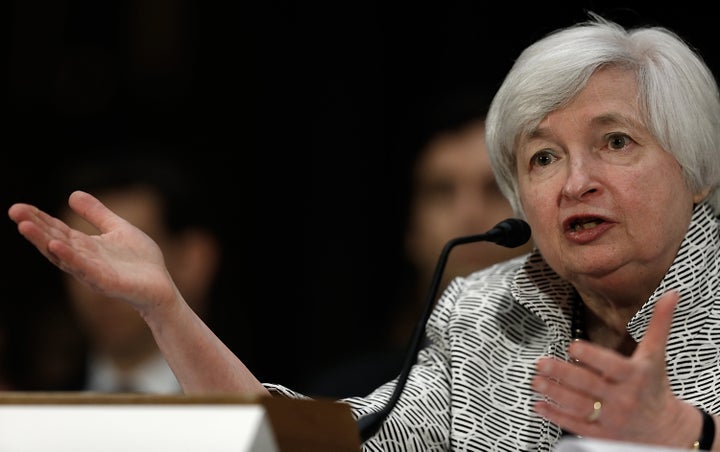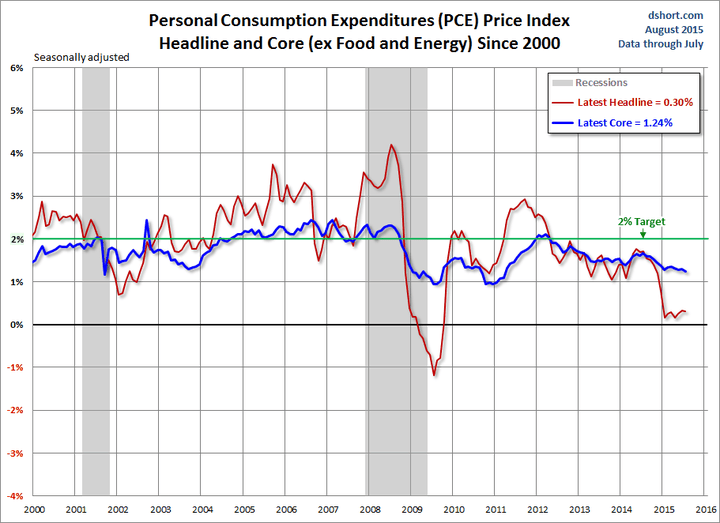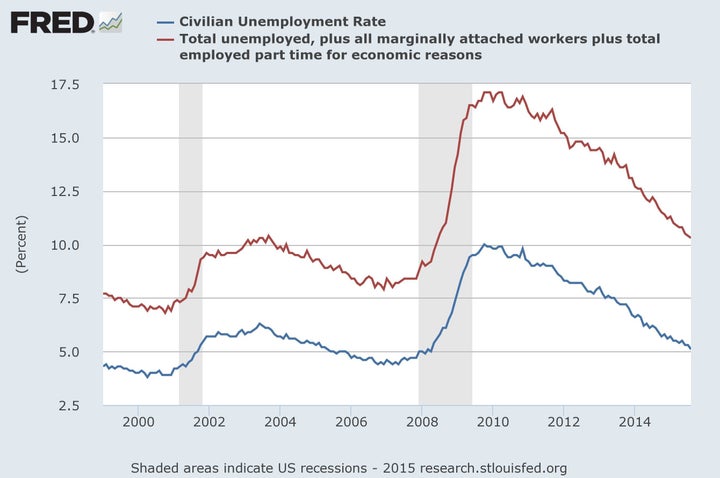
On Dec. 18, 2008, the Federal Reserve cut interest rates to zero. Unemployment was then 7.3 percent, and would later peak at 10 percent in October 2009.
Six years, eight months, and 28 days after cutting rates to zero, with unemployment down to 5.1 percent, the Fed has to decide -- as it has 54 times since December 2008 -- whether it's time to raise interest rates.
The case against raising rates now is fairly simple: Inflation is below the target, and while unemployment keeps dropping, wages aren’t increasing significantly. Meanwhile, the Chinese economy’s increasingly stuttering transition from one led by exports to one driven by consumer demand has sent its stock market diving, and a wave of volatility has swept global markets.
The Federal Reserve uses monetary policy to achieve two goals: keeping prices stable and maximizing employment. The Fed also has a broad responsibility to regulate financial institutions and maintain stability.
On the first point, inflation is now low and is predicted to stay that way. The Fed’s interpretation of stable prices is inflation that stays below 2 percent. Inflation in the U.S. has been beneath that target since 2012, and has fallen significantly since mid-2014 due to the drop in oil prices. Below, inflation is charted by Doug Short of Advisor Perspectives, an investment strategy firm:

In simple terms, when inflation is low, falling, and unlikely to jump anytime soon, there’s no reason for the Fed to raise interest rates.
Maximum employment is trickier to judge than inflation. There’s no hard and fast number for unemployment, job openings or wage gains that would signal that the job market is at peak health. However, even with unemployment at a seven-year low of 5.1 percent and the U.S. economy having added jobs for a record 66 straight months, there’s still room for the job market to get stronger.
The unemployment rate has fallen but wages have barely ticked up. The number of workers on the fringes of the U.S. economy has dropped significantly since the Great Recession, but things can still get better. A broader assessment of unemployment, called the U-6 rate, includes workers who want full-time work, but can only find part-time jobs, as well as workers who aren’t currently looking for jobs. That number is still 2 percentage points above its pre-recession level, at 10.4 percent:

The job market, in other words, has improved dramatically. But there's still enough of what economists call slack in the job market that overall wage increases are minuscule, despite the low overall unemployment rate.
To raise rates now would be an unfortunate signal from the Fed that the current job market is as good as it gets -- or at least as good as monetary policy should strive for the market to be.
Workers deserve a central bank that aims higher than that. We may be just arriving at the point where workers have some bargaining power. But after decades of wage stagnation, including the last few years of frustratingly sluggish raises in the wake of the worst recession since the Great Depression, that bargaining power shouldn’t be undermined by monetary policy.
As University of Oregon economist Tim Duy put it, saying that 5 percent unemployment is good enough when you could get to 4 percent "means denying jobs to roughly 1.5 million people.” And, of course, prematurely halting a falling unemployment rate means denying raises to millions more.
On top of this, there's the intense volatility in global asset markets, beginning in China. Former Treasury Secretary Larry Summers, who opposes a rate hike, points out that in the U.S. "markets have already done the work of tightening" via a less dramatic decline in stocks and higher borrowing costs. And fears over global economic growth, he says, only further decrease the likelihood that inflation will suddenly spike.
Inflation is low and falling, and the job market is good but can get better, and global markets are volatile. So why would the Fed raise rates now? As University of California economist Brad DeLong writes, the “arguments for raising interest rates right now are of appallingly low-quality” -- a few of them being anecdotes about high-flying startups, a desire to revert to conventional policies simply because they are conventional, and the harebrained idea that the Fed should raise rates now so it can cut them if the economy slows.
Worries about tech bubbles neglect the fact that interest rates are a bad tool to deal with out-of-control app investing, and assume that any bubble, anywhere, is dangerous to the economy writ large. Normalizing policy just to be normal is an outright abdication of courage and credibility, and raising rates so you can cut rates is a bit like gaining 20 pounds so it’s easier to lose 15.
There isn’t a compelling reason to raise rates. Doing so now would be a surprise and a mistake.
